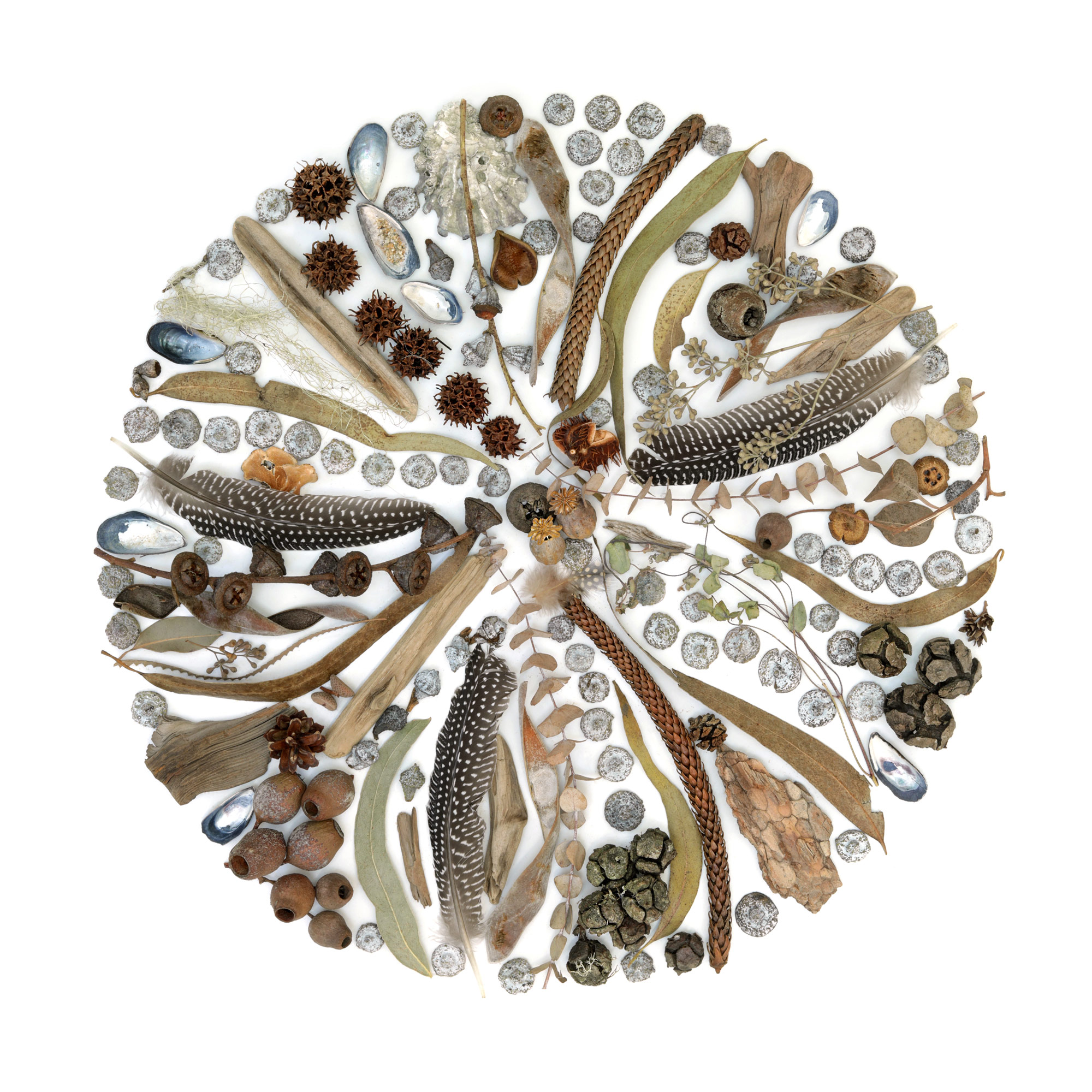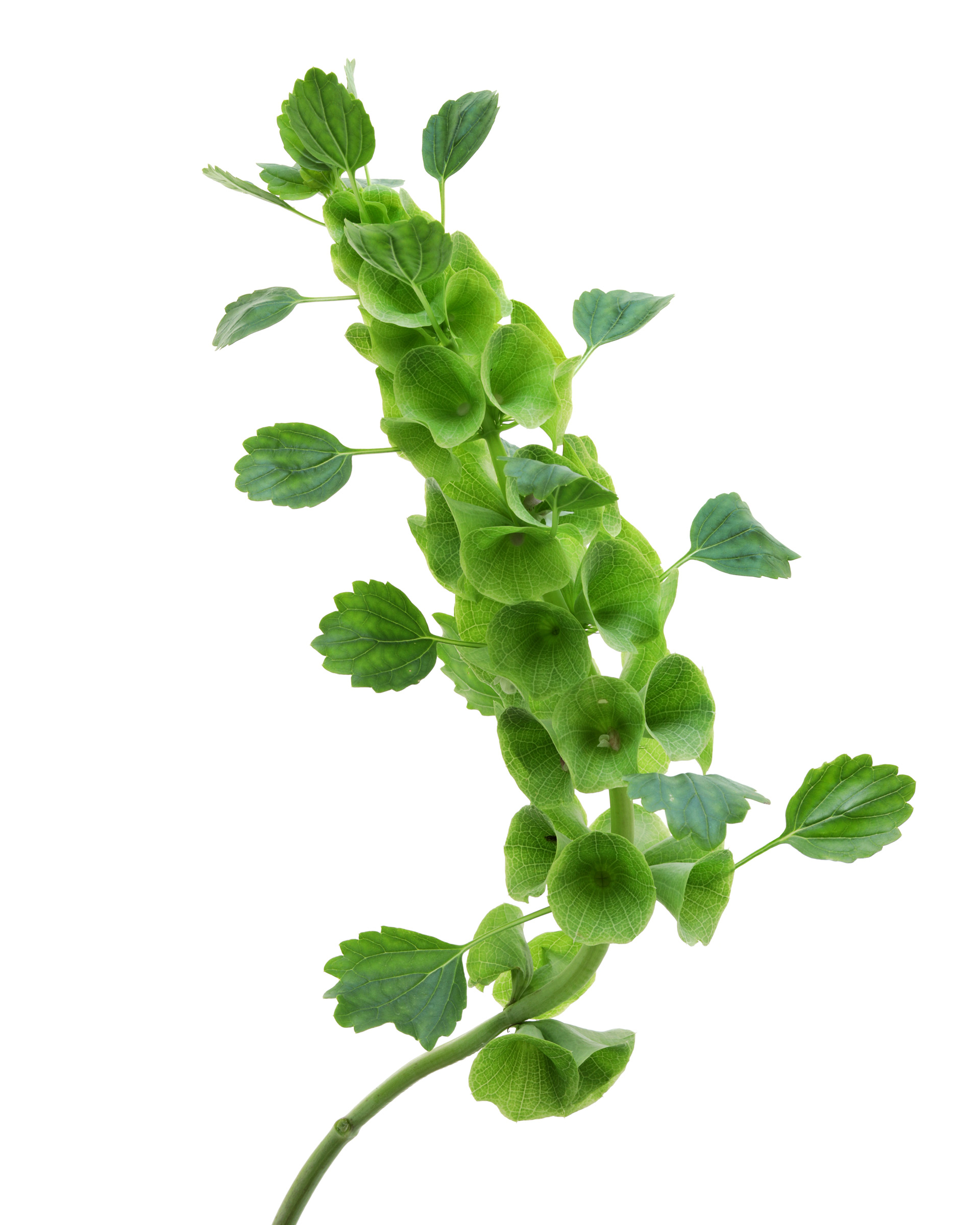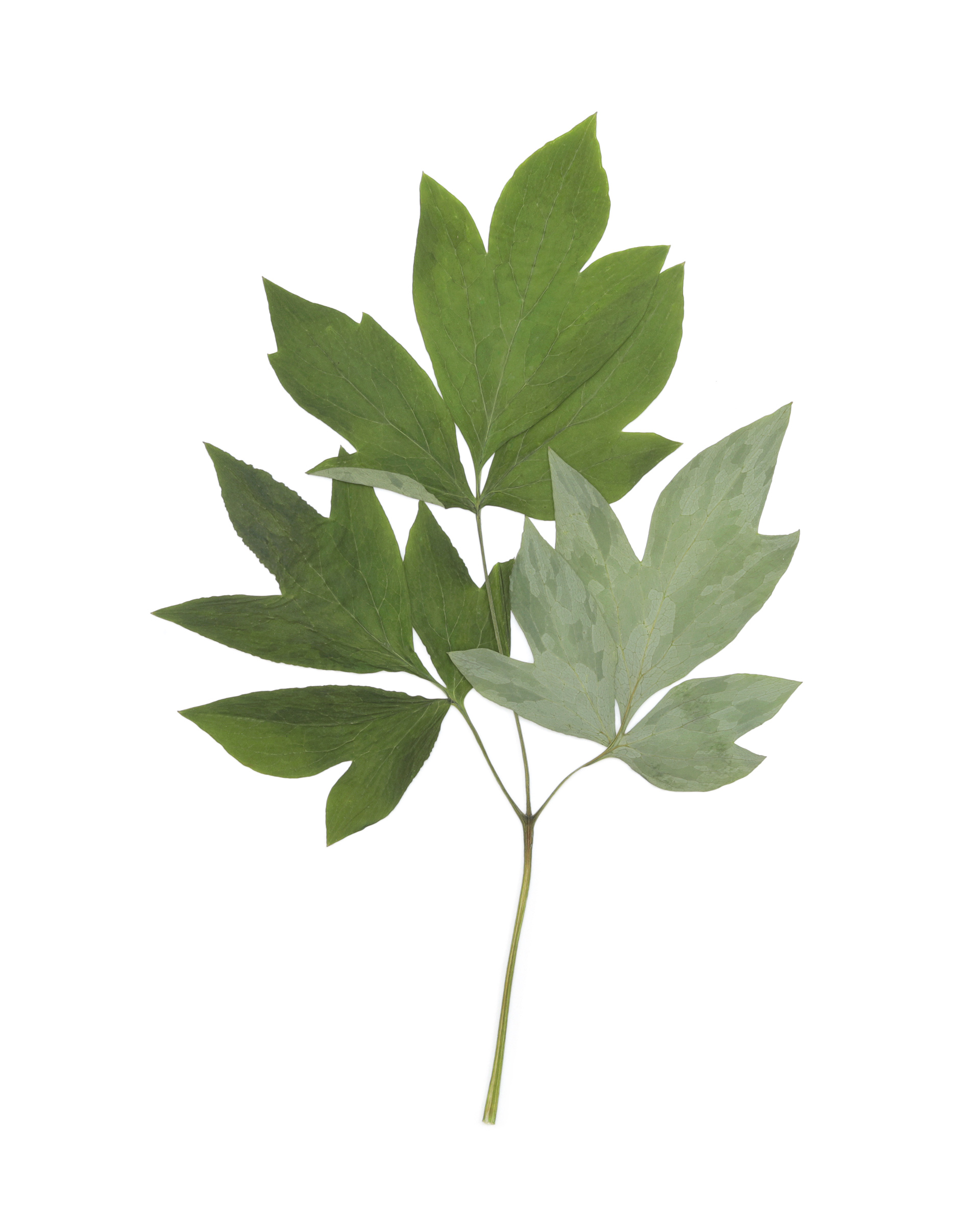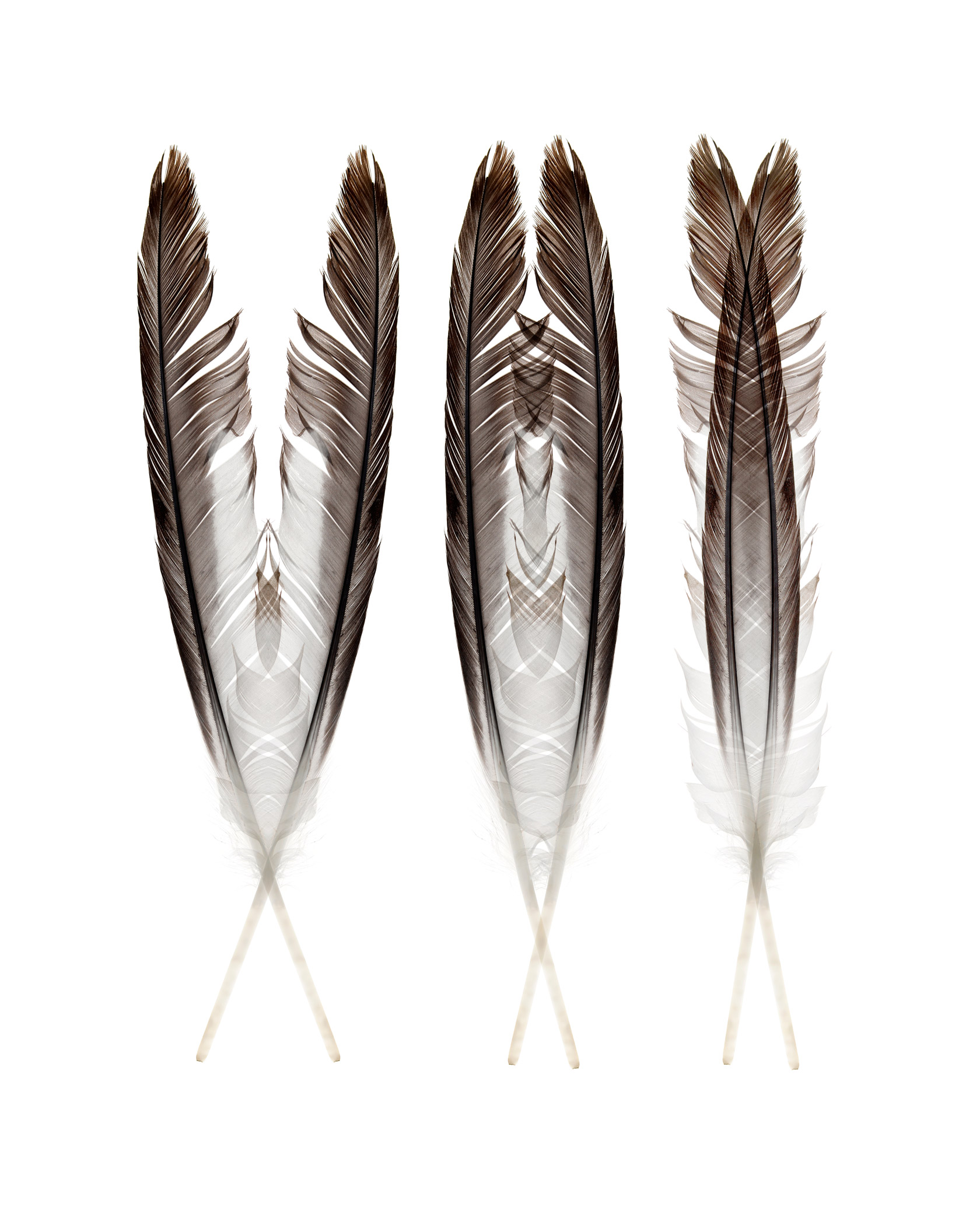
Northern California in a Nutshell
I’ve had two trips to northern California lately (both book related), and each time I come home I load up my pockets with found nature flotsam. I finally gathered enough bits to do one of my signature circles. Circles take a bit of time to put together…so Sundays are good days for assemblages. Happy Assemblage Sunday!
bits and pieces of found nature from northern California

apple green calyces
Another new-to-me flower: Are you familiar with Bells of Ireland? I am much more familiar with my native northern wildflowers, than I am with cultivated garden flowers. Inside each of those bell-shaped calyces is a tiny white flower. It may not add much color to your garden, but boy does it add some terrific sculptural variety–each sturdy spike of bells reaching up to 3 feet in height. I am excited to dry these and see what happens–so you can expect to see this very stem again in February :-)
Bells of Ireland (Moluccella laevis)

pressed into service
My mom took a fall yesterday trying to water her potted plants. We spent the day at the hospital getting her wounds dressed, and scans to make sure she didn’t have a brain bleed (she did not). So, with an hour of remaining daylight, I reached for the plant press, and this nifty little specimen was the first one I came to. I like the over-under two-toned coloration. Many leaves, I have noticed, have very different uppers and lowers. And it has me wondering why that is? What unique roles do the two surfaces play. Sounds like a good question for ChatGPT. A quick search and I found that the two sides may vary for structural and/or functional reasons that include: light absorption, water regulations, protection and adaptation, and temperature regulation. Are you using AI yet? I rarely do, but when I do I am reminded that it really does a nice job of synthesizing information. It’s as if I had done a google search, and then AI synthesized and summarized the top half dozen hits. If you haven’t tried it, give it a go. It’s free and easy. I use ChatGPT but my husband prefers Claude.
pressed (bleeding heart?) leaves

rufous-streaked flanks
This is one of my most-loved feathers. I have a small collection of them from our time in southern France. It comes from the French Partridge–a small round gamebird that prefers to run rather than fly. The reddish-brown colors on the tip of of this feather is described as “rufous”. Have you ever heard of the color rufous? It’s new to me. But now it is one of my favorites. :-)
red-legged partridge feather (Alectoris rufa) (a.k.a French partridge, Perdrix rouge)
-
I’ve heard of the Rufous hummingbird, but didn’t realize it might be related to its color.
The feather is lovely.reply -
I know of the Rufus sided Towhee and always thought that it referred to its color, but it is not a common name for the color. Beautiful feather
reply

the illusion of transparency
These gull feathers are pretty common beach finds. Unremarkable only because they are so ubiquitous. But a tiny hint of backlighting reveals their delicate structure and hidden geometry. Ordinary and extraordinary.
gull feathers
-
I love the abstract designs created because they are crossed over each other – a feathery kaleidoscope?
reply



Gasp!! It’s marvelous, MJ. Great way to start the week :)
Thank you.